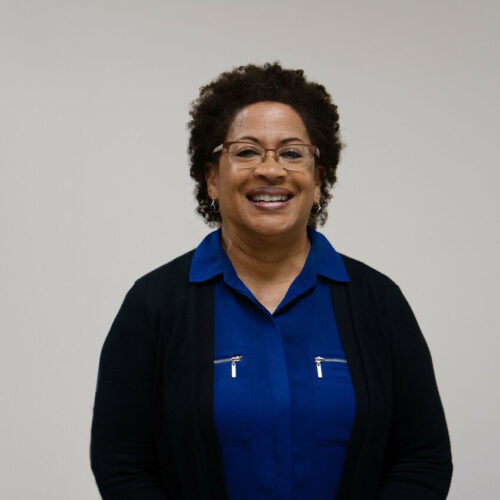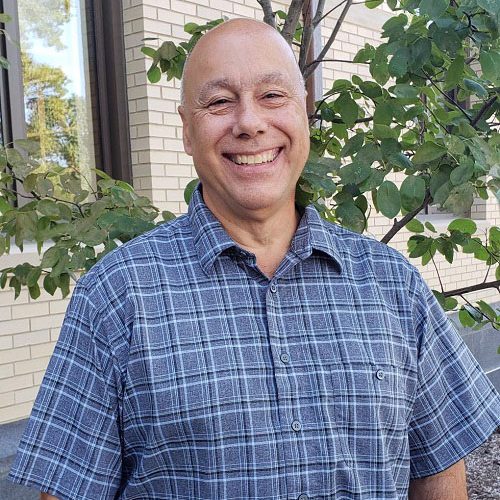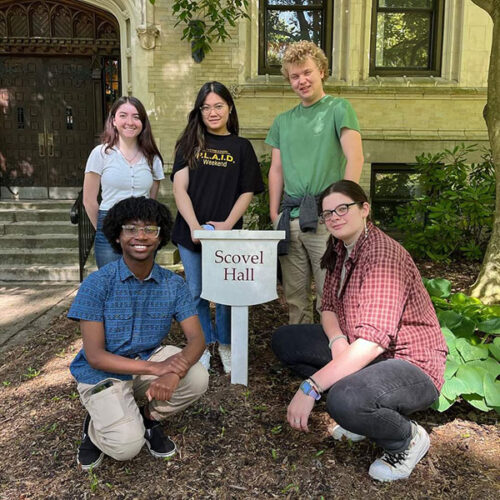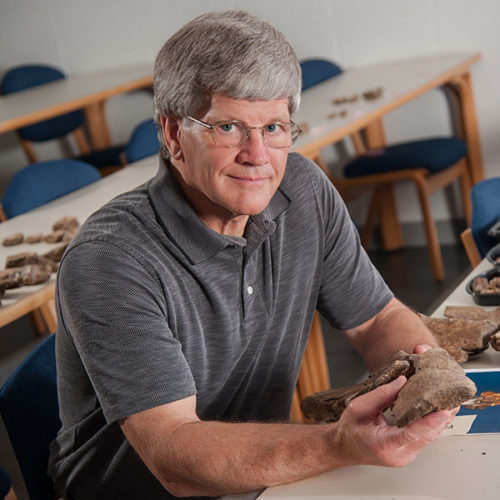
Annual Osgood Memorial Lecture to feature earth scientist and museum educator Lisa White
The College of Wooster Department of Earth Sciences will welcome Lisa White, director of education and outreach at the University of California Museum of […]
Graduates in environmental geoscience from The College of Wooster have gone on to protect natural resources and improve environmental health as geoscientists at non-profit organizations, environmental consulting firms, and government agencies. Some pursue careers in Geographic Information Systems (GIS), using spatial data and satellite imagery to solve environmental problems. Others become business leaders in the environmental remediation industry, policy specialists who advise lawmakers on climate and water resilience, and outdoor educators inspiring the next generation of scientists. Many Wooster environmental geoscientists go on to top-tier graduate or professional programs to build careers in research, law, and more. Wooster ranks sixth among U.S. institutions where women doctorate recipients in the physical sciences earn bachelor’s degrees according to a 2019 report published by the Council of Independent Colleges based on data from the National Center for Education Statistics and National Science Foundation.
Environmental Geoscience at Wooster is an interdisciplinary approach to solving complex global problems facing the Earth. Students take courses and conduct research with a focus on the physical environment and its interactions with humans. The Earth is our classroom and our small, advanced classes feature field trips to research sites near campus. As early as their first year, students start conducting research. Experiential learning is central to the program and many students participate in summer internships and research projects through partnerships established by the college. All students at The College of Wooster complete independent study under the guidance of a faculty mentor, culminating in a thesis delivered in their senior year.
View 2022 Annual Report (PDF)Learn about Wooster’s STEM community through the STEM Success Initiative

Instrument and Lab Tech/Machinist - Biology, Chemistry, Earth Sciences, Physics

The College of Wooster Department of Earth Sciences will welcome Lisa White, director of education and outreach at the University of California Museum of […]

Tyrell Cooper ’25, Earth Sciences Ihaja Metz ’26, Earth Sciences Mary Palmieri ’26, Earth Sciences My Pham ’25, Earth Sciences Advisors: Meagan Pollock, Greg Wiles […]

The College of Wooster will welcome Julia Clarke as she presents a lecture titled “The Secret Lives of Dinosaurs” on Thursday, Oct. 12 at […]

A 30-year archaeological survey and excavation at sites in Ohio’s Walhonding Valley, about an hour south of Wooster, has discovered evidence that the abrupt […]
The Earth Sciences Department offers two majors: geology and environmental geoscience. Both majors share a set of foundational science courses, followed by a selection of advanced courses in the earth sciences or cross-listed disciplines that allow students to pursue their interests and goals. The geology major is a more traditional earth science curriculum that prepares students for a variety of geoscience careers in fields ranging from paleontology and natural disasters to energy and natural resources. The environmental geoscience major is an environmental science that emphasizes Earth surface processes and interdisciplinary methods.
Students interested in environmental geoscience as part of their course of study can complete a minor in Earth Studies, which includes six courses in both environmental geoscience and geology.
In their junior year, Geology and Environmental Geoscience majors undertake a Junior Independent Study (I.S.) project in close collaboration with their peers and a faculty mentor. Students study the concepts and techniques of Earth Science research to prepare for their senior I.S., a capstone experience that challenges them to design and pursue a research project that makes an original intellectual contribution to the geosciences.
Because Earth Sciences are best learned by doing, majors often participate in extended field/lab work or a research program during the summer between their junior and senior years. In recent years, students have undertaken field studies in diverse places in the U.S. (Alaska, California, Indiana, Kentucky, Massachusetts, Minnesota, Oregon, Pennsylvania, Utah, Vermont, Washington) and across the globe (Bahamas, Belize, British Columbia, Cyprus, Mongolia, Iceland, Israel, and western Europe). Our students have worked alongside researchers in labs at The Ohio State University, UNC Chapel Hill, UMass Amherst, and the American Museum of Natural History, among other institutions.
Earth Sciences majors have completed projects on paleoecology and bioerosion of oysters, kinematics of deformation bands, formation of submarine and subglacial pillow lavas, and dendrochronological reconstruction of glacial history in Alaska. Examples of recent environmental I.S. projects include PCBs in San Francisco Bay, sustainability of groundwater pumping at a wildlife refuge, and climate implications of permafrost carbon storage.
| Student | Year | I.S. Title | Major 1 | Major 2 | Advisor |
|---|---|---|---|---|---|
| Please search to view results | |||||
Name: Matthew Engfer Majors: Environmental Geoscience, Environment & Society Advisors: Vibhor Agarwal, Carlo Moreno Patterns of hydrology within streams provide vital information about the […]
Name: Wenshuo Zhao Major: Environmental Geoscience Advisors: Greg Wiles, Vibhor Agarwal, Shelley Judge Blue intensity, or BI, has been proposed as a new parameter […]
Name: Lucie Fiala Major: Environmental Geoscience Minor: Spanish Advisor: Mark Wilson The Carmel Formation spans across much of the western United States. It is […]
Name: Jacob Hassan Major: Environmental Geoscience Minor: Computer Science Advisors: Vibhor Agarwal, Gregory Wiles; Mark Wilson (second reader) With the rise of global climate change, there is […]
Graduates in environmental geoscience from The College of Wooster have gone on to protect natural resources and improve environmental health as geoscientists at non-profit organizations, environmental consulting firms, and government agencies.
The Department of Earth Sciences is housed in Scovel Hall, one of Wooster’s most attractive buildings. Equipment available to earth sciences majors includes binocular and petrographic microscopes, a video system attached to a microscope, computers, photomicroscopes, zoom transfer stereoscope, fluid inclusion system, variable magnification scanning stereoscope, diamond saws and rock grinding equipment, photography labs, thin-section machine, mapping projector, seismic station, and large sedimentological, paleontological and mineralogical collections. The earth sciences library holdings are unusually complete for a small college.
The paleontological facilities at Wooster include standard rock saws and grinders, along with Nikon microscopes, digitial imaging systems, and fossil preparation tools. We also have extensive research collections, particularly for carbonate hardgrounds, ancient bioerosion, Ordovician invertebrates, and Jurassic limestones and fossils.
Ohio is a wonderful place to pursue undergraduate research in sedimentology and stratigraphy through Wooster’s Independent Study program. The local rocks provide an excellent sample of Paleozoic paleoenvironments and rock types. Our equipment includes GPS devices, computers, digital imaging equipment, numerous Nikon petrographic and dissecting microscopes, and the standard rock preparation tools, such as saws, grinders, and thin-section machines.
Dendrochronology or tree-ring dating is the method of scientific dating based on the analysis of tree-ring growth patterns. The tree-rings extracted from old wood can be calendar-dated and thus we can determine the calendar date the tree was cut. The tree-ring series are also records of past drought. We are interested in sampling historical structures for their tree-ring records. Our goal is to assemble long tree-ring chronologies from oaks by sampling both living trees and old wood. The data will be used by us and others in modeling past droughts in Ohio and together with similar records across North America.
The acquisition of an X-ray Fluorescence Spectrometer (XRF) and an X-ray Diffractometer (XRD) was funded by the National Science Foundation to support Wooster’s robust undergraduate research program. In addition to providing our students with valuable hands-on analytical experience, we hope that the instruments will foster creative collaborations and interdisciplinary research. Please explore this site to learn more about the instruments, who we are, and the research possibilities.